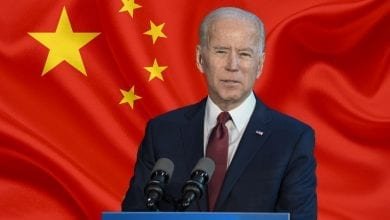Latest Data Indicates Fed Must Be More Aggressive
After a shockingly irresponsible monetary policy in 2021, which greatly contributed to the record high inflation, the Fed finally realized that the inflation problem was not transitory and was serious. By June 2022, the annual inflation rate peaked at 9.1%. The Fed aggressively raised interest rates by 400 basis points by year-end. That helped to bring inflation down, but then the Fed eased up.
In December interest rates were raised by only 50 basis points and in February 2023 rates were increased by only 25 basis points. The reduction in rate hikes was perceived to mean the Fed thought the inflation battle was easing. The goal was to reduce inflation to the 2% to 3% range without bringing on a recession.
By December of last year, the annual inflation rate had fallen to 6.5%. The Fed reasoned that moderate rate increases would continue to reduce inflation and provide for the soft landing they sought.
Unfortunately, the latest economic data indicates that an increase in the inflation rate will likely occur when the February and March CPI numbers are released. In other words, it looks like the Fed should continue to be aggressive with interest rate increases. The consecutive string of four 75 basis point hikes ended with December’s 50 basis point hike and February’s 25 basis point hike.
The purpose of the interest rate hikes, along with the reduction in the rate of growth of the money supply, is to reduce excess demand. That puts downward pressure on prices but would also put downward pressure on economic activity. As that happens the number of job openings should fall, the number of workers laid off should increase and the number of jobs created monthly should decrease. That leads to an increase in the unemployment rate.
But that is not occurring. The weekly number for laid off workers was in the 230,000 range. Instead of increasing it has fallen to the 190,000 range.
In a healthy economy, about 200,000 new jobs are created monthly. The Fed expected the new jobs number to be less than 200,000 in January. Instead, the latest report shows more than 500,000 new jobs were created in January.
At the end of 2022, there were 10.4 million job openings. Instead of decreasing, the number increased to more than 11 million in January.
During an economic slowdown the unemployment rate should increase. Instead, the January number fell to 3.4% which is a 60-year low. The job market data indicates a growing economy creating even more demand.
Consumer spending should also fall because higher consumer prices and higher interest rates reduce spending for any goods that require financing. Sales of homes and cars have fallen monthly for the past year and consumer spending, in total, has fallen in the last couple of months.
However, consumers don’t seem to be that concerned with higher prices or the talk of a recession since the total consumer debt is now $930 billion which is an 18.5% increase from last year at this time.
Most of the reduction in the inflation rate in the last half of last year was due to rapidly declining energy prices. The reason for that was China, the world’s second-largest economy, had shut down completely to avoid a COVID crisis. But in the Fall, they ended that policy and re-opened their closed production facilities. That increased the demand for energy prices.
Crude oil prices are up about $10 per barrel since China re-opened. Today China is increasing its demand for energy which will cause energy prices to increase further. Also, the winter worldwide had been relatively mild. But in the last week or so that changed as these polar vortexes bring very chilly temperatures. That will increase the demand for energy.
The annual inflation numbers will likely increase in February and March. That means the Fed will have to be more aggressive with rate hikes. History will show the Fed made a terrible miscalculation about inflation in 2021. In 2022 they took the right steps to correct that. But they let up way too soon.
The December interest rate increase should have been 75 basis points and the February rate increase should also have been 75 basis points. By reducing the rate increases, inflation will worsen. Let’s see what the Fed does at its next meeting in March.
Agree/Disagree with the author(s)? Let them know in the comments below and be heard by 10’s of thousands of CDN readers each day!




Of course they will continue to raise interest rates as it’s the only remedy that have for the out of control inflation that is bankrupting American’s middle class. Watch as Biden lies in the State of the Union address as he touts lowering inflation because they measure “month over month” and never talk about the 13.7% increase since Biden took office. He’ll also lie and say that gas prices are down, even though they have doubled since he took office and are rising again now that he’s no longer depleting our National Oil Reserves.
Remember that the biggest driver of inflation is the governments out of control “money printing” and we haven’t even felt the effects of the 2 1/2 TRILLION dollars that they have budgeting for the laughably called “Inflation Reduction Act” (really just a “Green New Deal” spending bill) and the pork filled “Omnibus Spending Bill”. There will be a severe recession this year (no matter how much they change the definition) and worse is coming.